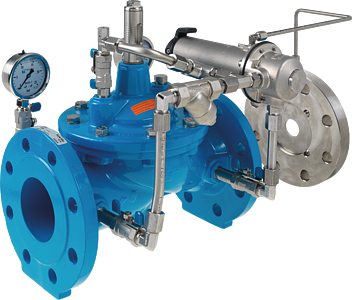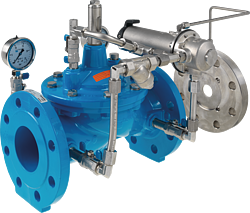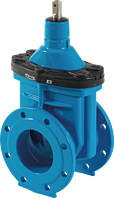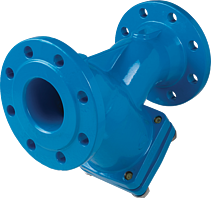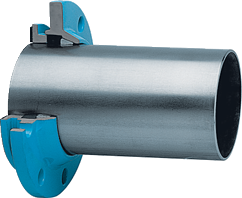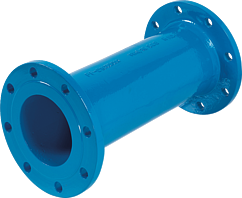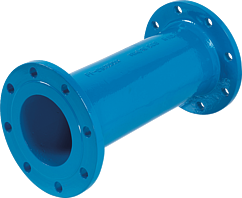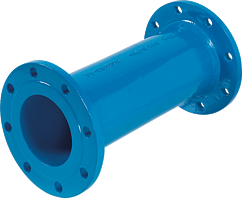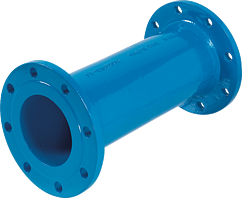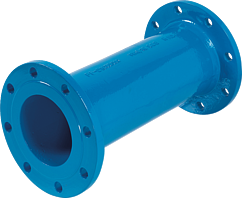1300200016 Flow limitation valve MBV DN 200 PN 16
Components
- 1: Main valve
- 2: Ball valve (A, B, C)
- 3: Filter
- 4: Orifice
- 5: Throttle check valve
- 6: Control valve
- 7: Differential pressure orifice plate
- 8: Optical position indicator (optional: Electrical position indicator, opening limiter)
- 9: Manometer with ball valve (A, B)
- B: DN 40 to DN 150: 22 mmDN 200 to DN 250: 27 mmDN 300 to DN 400: 29 mm
- X: 5 x DN line
- Y: 3 x DN line
Add to watchlist
Product attributes
| DN | 200 |
|---|---|
| PN | 16 bar |
| L | 600 mm |
| weight | 114.600 kg |
| Availability | on demand |
Physical characteristics
- The main valve is a hydraulically operating diaphragm valve. The work energy is the inherent medium.
- Most valve types operate purely hydraulically without any foreign energy.
Application
- To use in drinking water systems (other media after consultation)
- Limitation of the inflow from a pressure zone into a lower pressure zone
- Constantly maintaining a filter flow
- The supply to a secondary network necessitates a limitation of the flow, so as to not endanger, for example, the extinguishing reservoir of the primary network (in combination with a reduction in pressure).
Mode of operation
- The flow–control valve completely hydraulically ensures a pre–determined maximum flow, irrespective of any changes in the operating pressure. The nominal flow rate can be progressively varied up to ±15% via the control valve.
Product information
- To calculate the dimensions of the valve please refer to the following information:
- Maximum and minimum inlet pressure (static and dynamic pressure ratios)
- Required flow rate
- Permissible loss of pressure incl. measuring orifice (usually 0.5 bar over the valve and orifice plate)
- Available line diameters and lengths
- Construction of the valve (straight or angle design)
- For the calculation basis, information on the loss of pressure and the characteristic values of the valve, please refer to the end of Chapter E.
Design
- Design according to DIN EN 1074
- Construction length acc. to DIN EN 558
- Flange mass according to DIN 1092-2, to PN 25 DN 300
- Pressure levels: PN 10 or PN 16 to DN 300, PN 25 to DN 200, higher pressures on request.
- Nominal widths DN 50, DN 80, DN 100 and DN 150 available in angular design
- Nominal widths 1 ½" and 2" with threaded connection (female thread)
- Medium temperature up to 40°C
Installation and assembly
- Shut–off valves should be fitted on both sides of the valve and a dirt trap should be installed on the inlet side of the valve. Depending on the installation situation, a mounting/dismounting adapter should be provided.
- The orifice plate must be installed after the valve. It is recommended that the following measurements are taken into consideration:
- X = 5 x DN, distance between the valve and the orifice plate in a straight line
- Y = 3 x DN, distance after the orifice plate and the shut–off component, in a straight line
Vantages
- Maintenance-free, non-rusting valve seat
- Pressed-in seat
- EWS-coating according to RAL GSK
more
performance diagrambrochurecertificate


